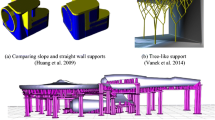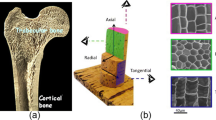Abstract
The mobile phone has become thinner even while its functionalities are ever increasing. Therefore, the importance of structural design to prevent structural failure is of increasing importance. To address this situation, a systematic optimization approach for shape design of a mobile phone folder module is utilized in this research. The structural strength and the exactness of the folder module assembly are considered as performance requirement of the optimization problem. Five shape parameters of the folder module assembly are used as design variables. In this research, the finite element method (FEM) is used to acquire the structural strength of the folder module assembly, and the morphing technique is applied to change the shape of the finite element (FE) model. However, manually performing the morphing and FEM for the simulation model is complex and time consuming especially for a model with complicated shape such as the mobile phone. Therefore, shape optimization involving FEM is known to be very difficult task for actual industrial applications. To overcome this deficiency, two types of approaches are applied in this research. First, process integration and design optimization (PIDO) technology is applied to integrate and automate the analysis processes needed for evaluating structural performances. In addition, a metamodel that can substitute for expensive simulation is employed for the optimization process. From this research, an optimum design for the folder module of a mobile phone enhancing the structural strength is acquired. In addition to the optimum solution, a metamodelbased shape optimization procedure which is applicable to practical engineering problem is established.
Similar content being viewed by others
References
D. Logan, A first course in the finite element method, thomson (2007).
G. Wolberg, Image morphing: a survey, The Visual Computer, 14 (1998) 360–372.
F. Flager, B. Welle, P. Bansal, G. Soremekun and J. Haymaker, Multidisciplinary process integration and design optimization of a classroom building, Journal of Information Technology in Construction, 14 (2009) 595–612.
R. Jin, W. Chen and T. Simpson, Comparative studies of metamodeling techniques under multiple modeling criteria, Structural Multidisciplinary Optimization, 23(1) (2001) 1–13.
LS-DYNA User’s Manual, Livermore software technology corp.
Wikipedia website: http://en.wikipedia.org/wiki/Morphing
DEP’s MeshWorks/Morpher User’s Guide, Detrot Engineered Products: http://www.depusa.com/morpher.html.
P. MacNeice, K. Olson, C. Mobarry, R. de Fainchtein and C. Packer, PARAMESH: A parallel adaptive mesh refinement community toolkit, Computer Physics Communications, 126 (2000) 330–354.
Sculptor User’s Guide, Optimal Solutions Software, LLC., http://gosculptor.com.
HyperMorph User’s Guide, Altair engineering, Inc., http://www.altairhyperworks.com.
HyperMorph User’s Manual, Altair engineering, Inc.
PIAnO User’s Manual, FRAMAX Co. Ltd.
R. Myers and D. Montgomery, Reponse surface methodology — Process and product optimization using designed experiments, Second Ed. John Wiley & Sons, New York, USA (1995).
S. Clarke, H. Gridbsch and T. Simpson, Analysis of support vector regression for approximation of complex engineering analysis, Journal of Mechanical Design, 127(6) (2005) 1077–1087.
J. Sacks, S. Schiller and W. Welch, Designs for computer experiments, Technometrics, 31(1) (1989) 41–47.
M. Powell, Radial basis functions for multivariable interpolation: A review, Algorithms for approximation, Clarendon Press, Ney York, USA (1987).
L. Wang and D. Beeson, Valuable theoretical lessons learned from the application of metamodels to a variety of industrial problems, Proc. Of International Design Engineering and Technical Conferences/Computers and Information in Engineering Conference, San Diego, California, USA (2009) 789–804.
N. Butler, Optimal and orthogonal latin hypercube designs for computer experiments, Biometrika, 88(3) (2001) 847–857.
T. Bäck, Evolutionary algorithms in theory and practice, Oxford University Press, New York, USA (1996).
Author information
Authors and Affiliations
Corresponding author
Additional information
This paper was recommended for publication in revised form by Associate Editor Jeong Sam Han
Gabseong Lee is a doctoral student of Hanyang University, Seoul, Korea. He received his master’s degree at Hanyang University in 2006. His major research interest is design under uncertainty such as reliability-based design optimization and robust design optimization. And he is also interested in the design optimization of the practical engineering systems.
Jeongseok Park is a research engineer of Samsung Electronics Co. Ltd. He received his master’s degree at Hanyang University in 2009. He is specialized in structural design and geometrical modeling of mobile phone. He is interested in structural optimization of the mobile device.
Dong-Hoon Choi is the director of the center of innovative design optimization technology (iDOT), Hanyang University, Seoul, Korea. He received his BS at Seoul National University in 1975, MS at KAIST in 1977, and Ph.D at the University of Wisconsin-Madison in 1985. He has been a professor of Mechanical Engineering at Hanyang University since 1986. His areas of research interest include theory of engineering optimization and its application to engineering systems, multidisciplinary design optimization, sequential approximate optimization, and design under uncertainty.
Rights and permissions
About this article
Cite this article
Lee, G., Park, J. & Choi, DH. Shape optimization of mobile phone folder module for structural strength. J Mech Sci Technol 26, 509–515 (2012). https://doi.org/10.1007/s12206-011-1212-3
Received:
Revised:
Accepted:
Published:
Issue Date:
DOI: https://doi.org/10.1007/s12206-011-1212-3




